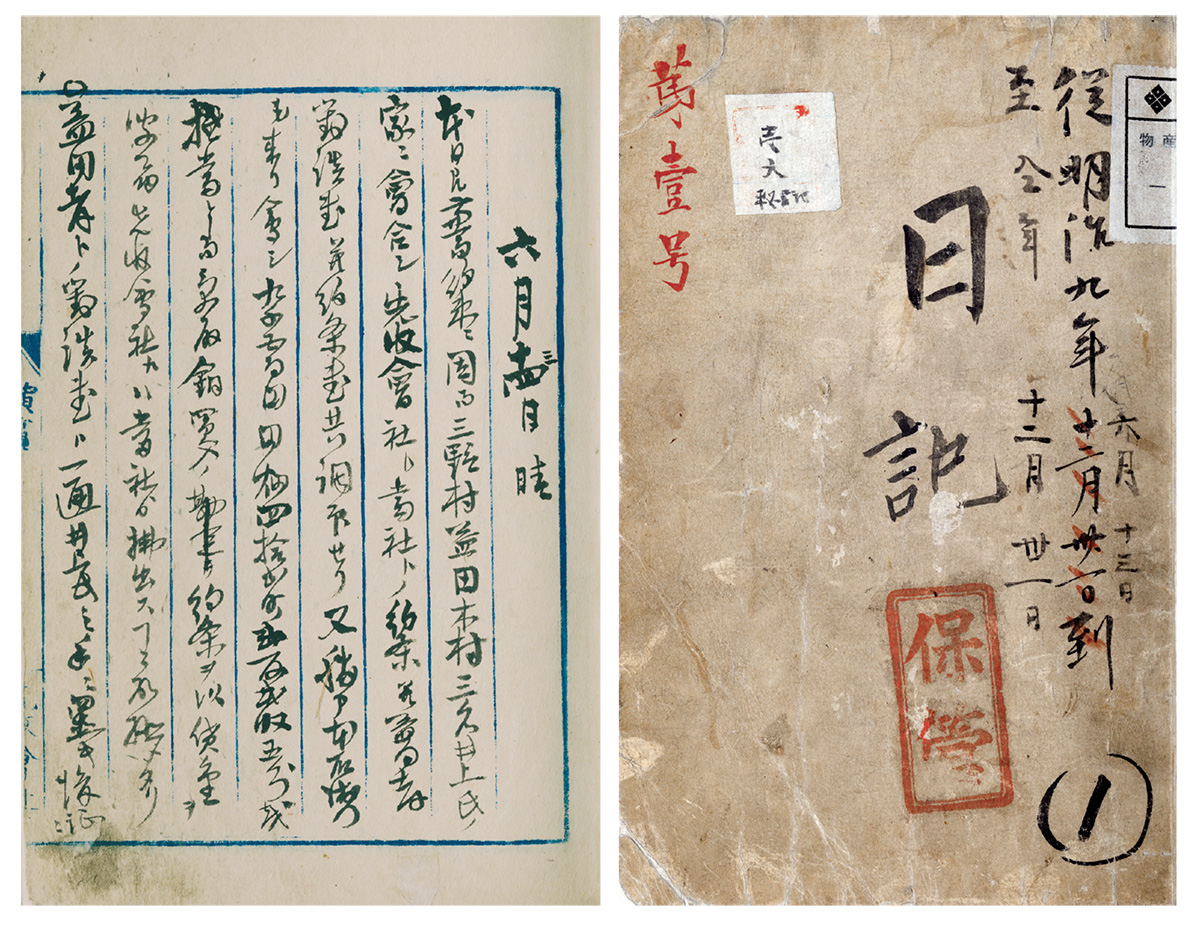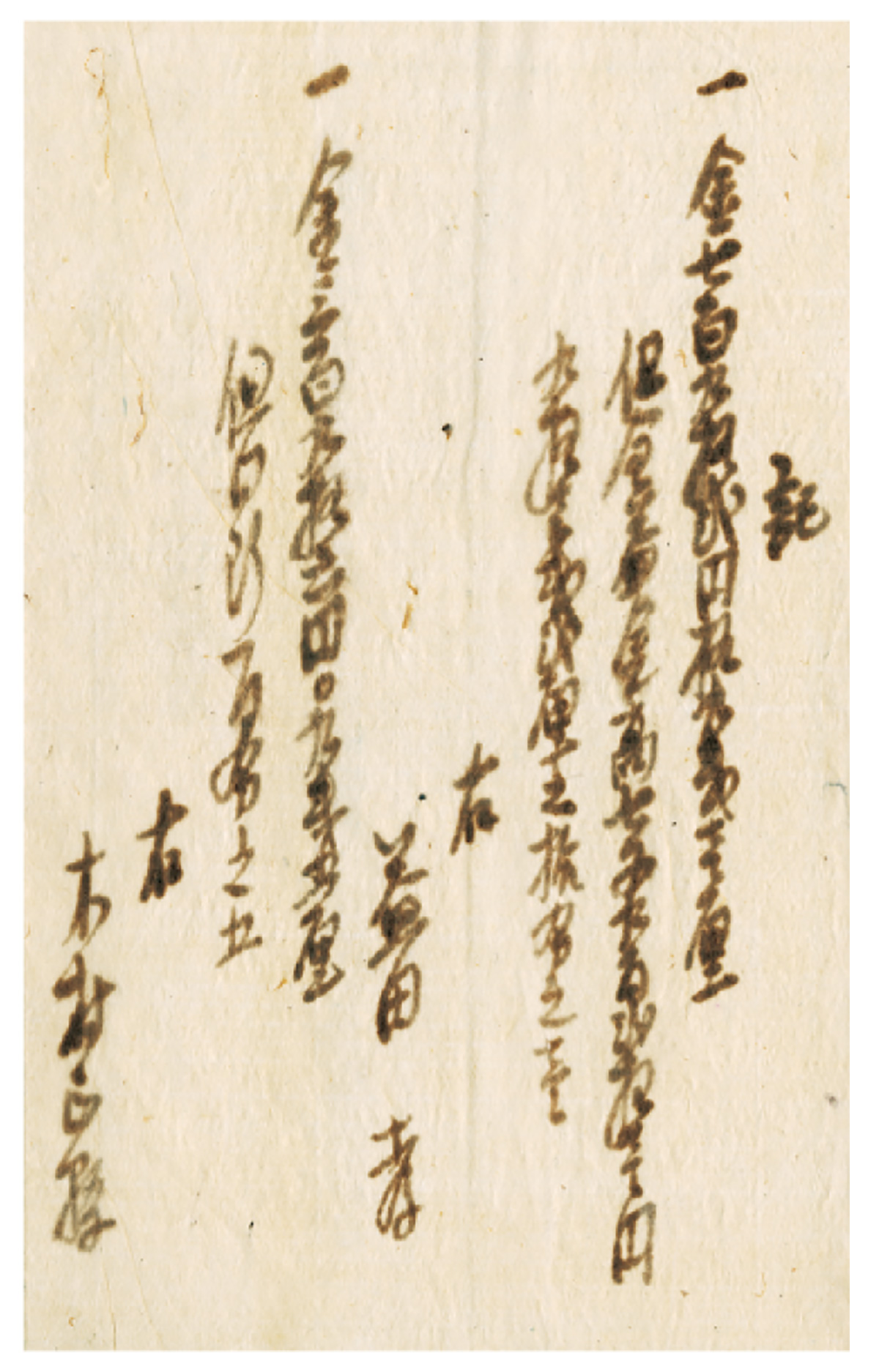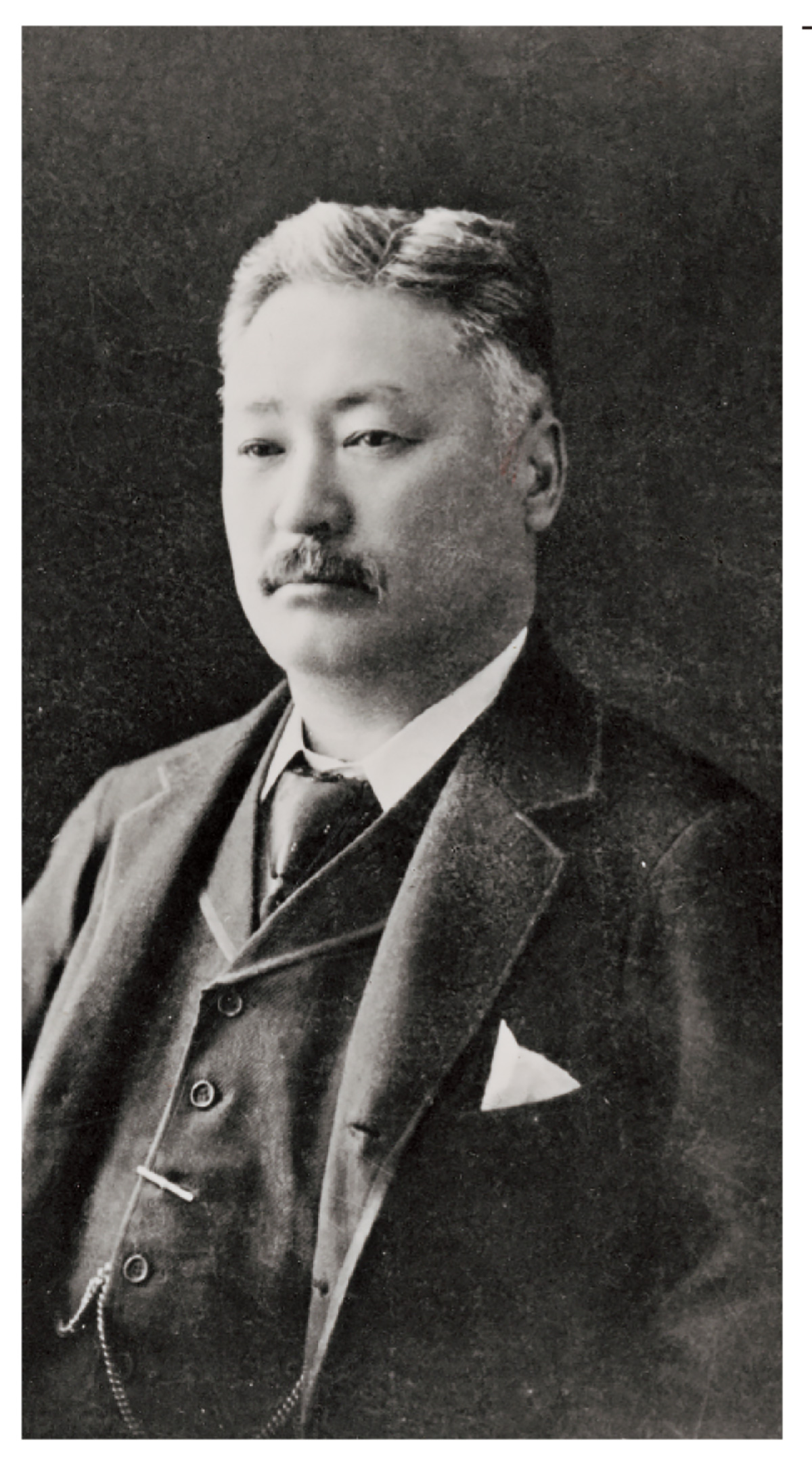30 The Founding of Mitsui Bussan

Senshu Kaisha
In 1873, Inoue Kaoru (→37), who had resigned as a vice-minister at the Ministry of Finance due to a financial disagreement, established Okada-gumi, a mining and trading concern, with Osaka merchant Okada Heizo and others. Shortly after its founding, however, Okada passed away suddenly, so Inoue launched a new firm, Senshu Kaisha, which began doing business in 1874. Senshu Kaisha’s main operations included imports of carpeting (woolen fabrics), blankets, weapons and other items to be delivered to the Army Ministry, and transactions involving rice from the Tohoku region, annual rice taxes from Yamaguchi Prefecture and others. In February 1875, it was decided Inoue would return to government, and Senshu Kaisha was dissolved. At that point, Minomura Rizaemon (→22) approached Inoue and Masuda Takashi to suggest that Mitsui take over Senshu Kaisha, with Masuda at the helm. While Masuda was not enthusiastic about the idea at the time, Minomura went through a variety of channels to persuade him, and after multiple discussions, it seemed Masuda’s feelings changed. On May 1, 1876, a three-way meeting between Inoue Kaoru, Masuda Takashi and Minomura Rizaemon was held at Inoue’s home, where it was unofficially decided that Mitsui would take over Senshu Kaisha and establish a new firm. During that meeting, the basics of the new company were solidified, including the fact that Masuda would retain basic management control of the new company, though he would require Minomura’s consent for new contracts and to start new business. On June 13, agreements were signed between Minomura, Masuda and Kimura Masamoto, finalizing the founding of Mitsui Bussan, to succeed Senshu Kaisha (→Fig. 30a).
The Founding of Mitsui Bussan
On June 23, 1876, an application for the founding of Mitsui Bussan was submitted to the Governor of Tokyo. The directive approving the application was received dated July 28. (The founding itself was dated July 1. Note that the current Mitsui Bussan is a separate corporate entity with no legal continuity with Mitsui Bussan founded at that time (→50).
The new company was formed through a partnership agreement between Mitsui Takenosuke and Mitsui Yonosuke, with both men as owners. In conjunction with the company’s establishment, it was agreed between Takenosuke, Yonosuke and the Mitsui family that the two men’s property would be clearly separated, that they would not be obligate to compensate one another for debts, etc., and that while the two men would maintain family registries separate from the Mitsui family, they would continue to be treated as part of the Mitsui line.
Mitsui Bussan was launched for the purpose of exporting Japanese products overseas and importing products to meet domestic Japanese demand. Its basic policy was to avoid wherever possible uncertain business based on future price forecasts, and to rely instead on reliable commission income. No initial capital was established (though it was eventually set at 200,000 yen in August 1880), and the company entered into fund-raising agreements with Mitsui Bank and the First National Bank for up to 50,000 yen and 10,000 yen, respectively. While it is unclear precisely how many employees the company had at its founding, as of September 2, 1876-shortly after its establishment-the company had 16 employees on monthly salaries.
Merger with Kokusankata
On November 15, 1876, Mitsui Bussan merged with Mitsui-gumi Kokusankata and took on 51 of its employees. Mitsui-gumi Kokusankata was established August 1874 for the purpose of handling products from various regions of Japan. In addition to dealing in the distribution of rice and other regional products, as well as handling the exchange of documentary drafts, the firm also dealt in the overseas export of rice at the behest of the Meiji government. Along with Senshu Kaisha, Kokusankata can be considered another predecessor of Mitsui Bussan.
Masuda Takashi and Kimura Masamoto
The founding of Mitsui Bussan was due primarily to Masuda Takashi, who was appointed its president. Masuda was born into a family of officials on Sado Island, and had traveled to Europe in 1863 as a member of the shogunate’s envoy to France. Following the dissolution of the shogunate, he was hired by the Walsh, Hall & Co. trading firm in Yokohama, where he worked for about a year learning the trading business. He was subsequently invited by Okada Heizo to assist him in Osaka in the business of separating gold and silver from ingots and delivering it to the Mint; it was around this time that he became acquainted with Inoue Kaoru. He joined the Ministry of Finance on Inoue’s recommendation, but resigned in conjunction with Inoue’s own departure from the ministry. He then participated in the founding Senshu Kaisha and was in charge of the company’s actual management. These abilities are what eventually caught Minomura’s attention.
Kimura Masamoto, who was appointed as Mitsui Bussan’s vice-president, was born in 1843, a samurai of the former Choshu domain (present day Yamaguchi Prefecture), and participated in the founding of Senshu Kaisha at Inoue’s invitation. He was apparently of solid character, and his role at Mitsui Bussan was to support Masuda as he expanded the business widely. Kimura was solely responsible for arranging financial support for the poorly funded company, which had launched without capital.
Mitsui offered these two men unprecedented compensation. By contract, Masuda’s salary was 200 yen per month, with a bonus equal to 10 percent of Mitsui Bussan’s net profit, while Kimura’s salary was 100 yen per month with a bonus of 5% of net profit. In the company’s first financial closing (for the period between July and December 1876), Masuda and Kimura were paid bonuses of more than 792 yen and 396 yen, respectively, in accordance with their contracts (→Fig. 30b).

The Journal of Mitsui Bussan is a daily record of the company’s head office operations, and is a valuable historical document that provides information on business transactions, employee movements, personnel matters, and communications with Mitsui Bank, the government and government agencies. There are 24 volumes covering the period from 1876 to 1898.
Included here are the cover and opening entry of the first volume of the Journal. In the record of the meeting that took place at the home of Inoue Kaoru on June 13, 1876, prior to the company’s July 1 founding, the Journal notes, “As promised previously, today Minomura, Masuda and Kimura gathered at Inoue’s home to sign the agreements concerning Mitsui’s assumption of Senshu Kaisha and the establishment of a new company,” recording the take over of Senshu Kaisha’s operations and the finalization of the founding of Mitsui Bussan In the early journals, Masuda Takashi, President, and Kimura Masamoto, Vice-President, often wrote their own entries. The entry for this date was written by Masuda.

The section listing bonus amounts for Masuda and Kimura

Grew Mitsui Bussan into a global trading company, became leader of Mitsui as a whole and created the Mitsui Zaibatsu organization. Also famous as a tea master, he took the name Donno.
